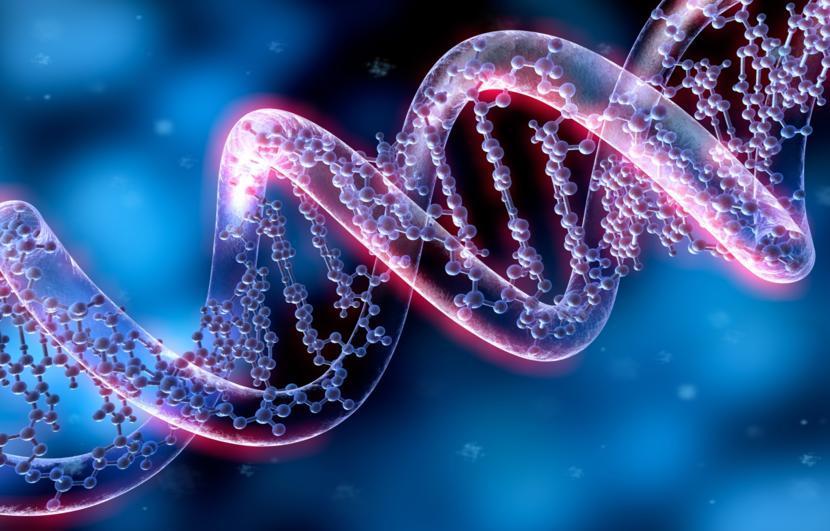Tumor DNA in Blood Used to Spot Ovarian Cancer

The longer that a cancerous tumor lies undetected in the body, the greater the risk of severe or irreversible complications. That being said, detecting cancer early can be difficult, especially if the cancer shares symptoms with other, more common diseases. Many cancers have high survival rates in their earlier stages, but the prognosis for cancers discovered in later stages is never good. For this reason, research is being directed at detecting cancers early, as well as being directed towards a cure.
Those diagnosed with ovarian cancer can expect a long trail to diagnosis, with a multitude of different tests and appointments over the span of several weeks, or even months. The only way to ensure that an individual has cancer is for a doctor to remove a sample of the tumor and test it. This procedure, called a biopsy, can take some time on top of other unpleasant procedures such as laparoscopy or colonoscopy that a patient might have to go through.
During all this testing, if cancer is indeed present, it is simply growing while doctors and physicians attempt to be sure beyond all doubt that they are presenting the patient with a cancer diagnosis. Fortunately, recent breakthroughs have moved us one step closer in being able to determine the presence of cancerous bodies without invasive and time-consuming measures. Researchers at John Hopkins Kimmel Cancer Center have made progress in being able to identify early-stage cancers with only a blood test.
Direct cancer detection
All cancers are the result of genetic mutations at the cellular level. Cells die and are replaced daily, but the DNA that regulates this process is subject to mutation as we live and grow older. If a cell mutates and becomes harmful, it will begin to grow and spread rapidly, eventually killing off or damaging other nearby, healthy cells. When the growth of these bad cells becomes excessive, they become the tumors that we are able to see physically on a person’s body.
Previous research has led to the discovery that these mutated cells can be detected in the bloodstream. It has been known for quite some time that cancer travels through the bloodstream; this is the worst scenario for someone diagnosed with cancer. When cancerous cells metastasize, they carry their infected DNA to distant organs or body parts and give rise to new tumors. Yet it is only recently that researchers have been able to identify specific genetic sequences that indicate that these cells are cancerous, or may lead to future cancers.
The research team at John Hopkins Kimmel Cancer Study took that research a step further, and determined that if they could identify mutated DNA in the bloodstream, then they could also catch and target growing tumors before they grew to become problematic. They called the technique “error correction sequencing,” and published the results of their findings in the Science Translational Medicine scientific journal. The name of the study is “Direct Detection of early-stage cancers using circulating tumor DNA.”
Deep DNA sequencing
One of the greatest scientific accomplishments of the last century was the Human Genome Project. This international collaboration led to the successfully mapping of every DNA code known to the human body. Using this information, scientists are able to see from a physical standpoint which genes should be arranged in any given way (every person’s exact genetic makeup is slightly different). This also enables scientists to see when genetic code is broken or abnormally mutated.
The John Hopkins research team analyzed the blood of 44 healthy individuals and 200 individuals who had been diagnosed with different kinds of cancer, including ovarian cancer. The cancer patients were all at different stages of the disease, some earlier and some later in the progression and growth of their tumors. The research team was searching for common, identifiable DNA markers in the blood for all of the cancer patients, regardless of their cancer.
In order to check the patient’s DNA against what would be considered healthy and normal for them, the researchers used a technique called deep DNA sequencing. This method analyzes DNA in the blood and compares thousands of DNA sequences simultaneously, searching for inconsistencies and abnormalities. Through this method, even small inversions or breaks in genetic code would be flagged, and would indicate that a person had potentially cancerous DNA flowing freely in their bloodstream.
The blood samples were also compared against 58 genes that were known to either cause or be the related to the development of cancer. The results were surprisingly consistent. None of the healthy individuals had any signs of genetic mutation, as expected. In patients who had been diagnosed with stage 3 or stage 4 cancer, 77% of the patients were found to have DNA mutations related to tumor growth. The results were only slightly less accurate, with 62% of stage 1 and stage 2 cancers matching the DNA sequencing for cancerous genes.
Future applications of the research
The end results of the study were most accurate for those with colorectal, ovarian, breast, or lung cancers. Approximately 3 out of every 5 individuals were successfully identified, meaning that while the study offers an exciting new route in early detection of cancer, there is still much room for improvement. Still, if a biopsy of a tumor is the only indisputable way to identify cancer, then a simple blood draw could be well on its way to becoming a standard practice.
Part of the investigation led by the John Hopkins research team was in the prediction of the trajectory of some cancers, as well as their identifiable presence in the bloodstream. The research team wanted to examine whether or not there was a correlation between the level of tumorous cells in the bloodstream and the way that an individual might respond or fail to respond to relevant surgeries.
The team found that higher concentrations of cancerous cells in the bloodstream led to higher risk of recurring cancer in patients, and also found a correlation between high tumorous DNA levels and poorer survival rates. Following the conclusion of the study, a press release submitted by Victor Velculescu, lead author of the study, stated that “using DNA changes in the blood is feasible,” and that the team’s “high accuracy sequencing method is a promising approach to achieve this goal.”
Final thoughts
Waiting until cancerous tumors have grown large enough to be problematic is never a good idea. By the time a tumor is identifiable, individuals have enough mutated DNA in their bloodstream to put them at risk of metastasizing. In certain cancers, the timetable is more aggressive in others, but it only takes the one tumor to cause enough of a problem to fully shut down critical systems. For this reason, notifying your doctor as soon as you discover strange lumps or symptoms is important in catching the disease early and giving yourself the best odds of survival.
While blood samples cannot replace biopsies or other invasive tests in confirming the presence of cancerous tumors in the body, it can go a long way in screening and detecting possible tumorous growths early. Even if the study was imperfect in identifying tumorous DNA in the bloodstream, it was perfect in identifying healthy individuals, and can help physicians move past cancer onto other complicated diseases in the event that severe health issues arise.
Given that the current screening process involves CT scans, ultrasound, barium enema x-ray, chest x-rays, and colonoscopies—the research performed by the John Hopkins Kimmel Cancer Center team is a considerable achievement in the speed and effectivity of cancer detection.
References
https://ovariancancernewstoday.com/2017/09/08/detecting-early-signs-cancer-blood/
https://www.cancer.org/cancer/ovarian-cancer/detection-diagnosis-staging/how-diagnosed.html















